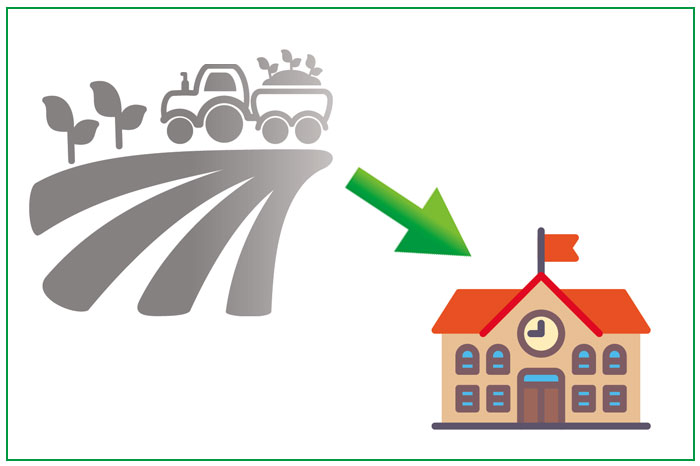THE BEGINNING OF EACH school year ushers in a whole new set of experiences for Florida’s children, whether it is a new classroom, new teacher, new classmates, or even a whole new school. This year, Florida students will be going back to more than new classes, teachers, and friends — we’re working to make sure they will see more Florida products in their meals too.
As Florida’s Commissioner of Agriculture, improving the nutritional value of school meals by adding more locally-grown produce to school trays is one of my top priorities. In 2011, I worked with the Legislature to move Florida’s School Nutrition Program from the Department of Education to the Florida Department of Agriculture and Consumer Services. Because of our knowledge of and relationships with the agriculture industry, I believed then and still believe now that we can better connect Florida’s growers and producers with schools and direct more of our world-class fresh fruits and vegetables to school cafeterias.
We make these connections through our Farm to School program. Every year, Florida schools spend millions of dollars for fresh produce. The Farm to School program is intended to open the door for more of those dollars to stay within Florida. It also supports Florida farmers by promoting opportunities for schools and growers to work together to increase the volume of locally-grown products that is served in school cafeterias and dining halls.
For example, the Farm to School program helped facilitate the purchase of more than 17,000 pounds of Florida-grown blueberries and 15,000 pounds of Florida-grown peaches for Orange County schools in one purchase last year. This is just one example of the hundreds of purchases the program helps facilitate between Florida’s producers and schools. All told, the program helped facilitate the purchase of more than 3.5 million pounds of Florida produce in 2015. These purchases not only gave students the opportunity to enjoy fresh, Florida produce, but also it supported producers in the community.
In addition to better connecting growers and schools, the department has helped coordinate statewide lunch menus to coincide with Florida’s harvest seasons. By aligning the produce side of the school menus with Florida’s harvest seasons, Florida’s schools are able to access more locally-grown produce at affordable prices. Incorporating locally grown products into school meals also supports local economies, reduces transportation costs, and helps preserve farms and farmland.
By making these important changes, we’re working ensure that all children have access to the healthy meals they need to succeed in school. We’re proud of the improvements to school nutrition across the state because research shows there is a direct connection between nutrition and academic success. Eating a wholesome breakfast improves academic performance, increases attendance, and increases the likelihood of high school graduation.
Florida has an abundance of fresh, wholesome fruits and vegetables — exactly what should be served in school cafeterias. We are committed to exploring opportunities to further marry farmers with school districts, incorporating technology to increase awareness of product availability and need, and creating additional demand for products during harvesting times. Expanding access to nutritious foods through agricultural partnerships and education efforts, we will help foster healthier eating habits among our youngest residents, creating a better and brighter Florida for children and farmers.
CREDIT
article by Florida Commissioner of Agriculture ADAM H. PUTNAM

